PB100: The Pete Bowers Centennial
Rebooting the Fly Baby
15 May 2018
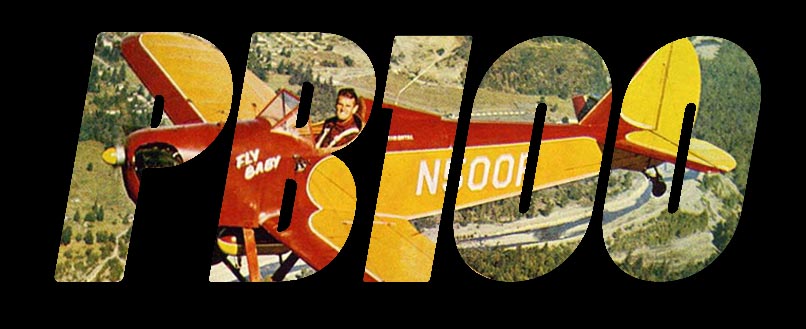
Peter M. Bowers
Table of Contents
-
Introduction
-
What is PB100 About?
- Accessing
the building series in EAA SPORT AVIATION Magazine
- Finding Help
-
Building Information
- Update Information:
Details on changes to this PB100 web page
Introduction
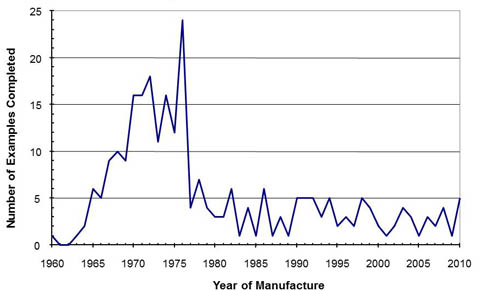 In 1958, the Experimental Aircraft
Association (EAA) announced a contest to design, build, and
demonstrate a new homebuilt aircraft. The winner would
have to be simple and inexpensive to build in the home shops
and garages of that era. One of the stipulations of
the contest was that the winning designer would have to
completely document how to build that airplane within the
pages of EAA's SPORT AVIATION magazine.
In 1958, the Experimental Aircraft
Association (EAA) announced a contest to design, build, and
demonstrate a new homebuilt aircraft. The winner would
have to be simple and inexpensive to build in the home shops
and garages of that era. One of the stipulations of
the contest was that the winning designer would have to
completely document how to build that airplane within the
pages of EAA's SPORT AVIATION magazine.
Peter M. Bowers and his "Fly Baby" won. It was an inspired selection for a number of reasons. Not only did the Fly Baby meet the buildability and flyability criteria of the contest, in Pete Bowers they had that rarities of rarities... an engineer/aircraft designer who would actually write.
And so, in a 14-part series in EAA SPORT AVIATION starting
in December 1962 (just four months after winning the
contest), Pete wrote about how to build a Fly Baby.
Thousands of EAA members started construction. Dozens,
or even hundreds of them were completed and flown.
While he worked on the articles, Pete was assembling a
stand-along set of plans for sale. The plans used the
same diagrams (drawn by Jim Morrow) as the magazine
articles. The diagrams printed in SPORT AVIATION
even had the figure-numbering of the plans set, rather than
relative to their position among the articles. From
1963 to 2003, Pete ended up selling around 5,000 sets of
plans. About 500 airplanes were built, either from the
magazine articles or from the plans. As you can see
from the above diagram most of the planes were completed in
the '60s to early '70s.
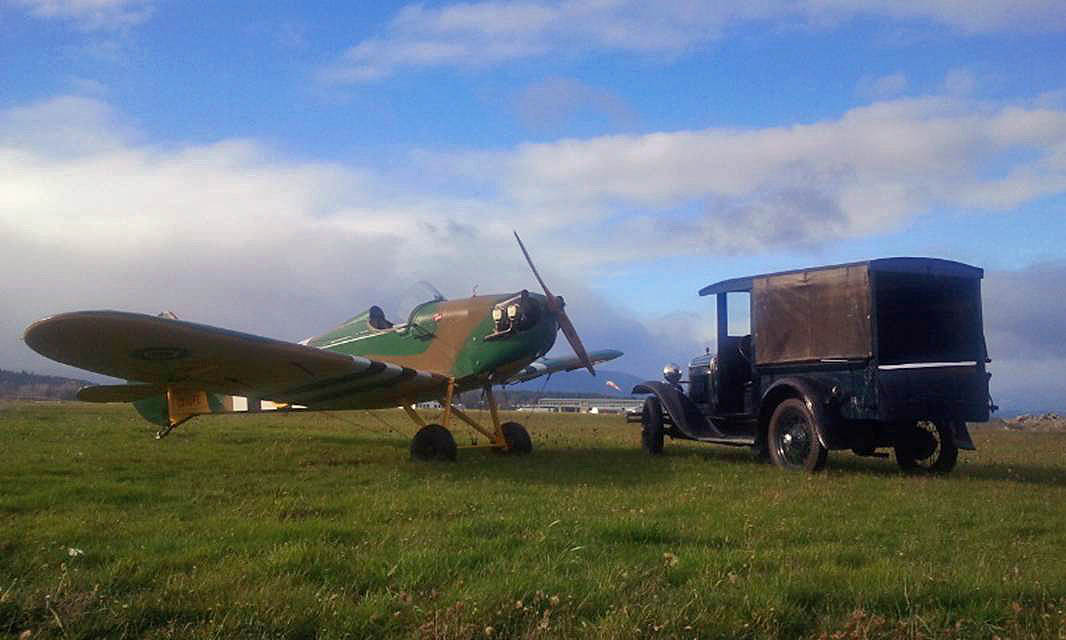
So, what's the problem?
It's the 100th anniversary of Pete Bowers' birth...but the
plans for his most famous creation are no longer
available.
And, in any case, the plans were written in 1963.
While there were almost a dozen revisions, they all were
technical in nature--correcting dimensions, etc. The
current planes don't really doesn't reflect the realities of
the 21st Century.
Finally, people are different now from back then.
Back in the '60s, high school kids took shop classes, and
practically anyone with a house had a table saw and did some
minor woodworking. It's just not the case,
anymore. The classic argument for a Fly Baby is that
it's built just like a balsa-and-tissue model. But how
many people are actually building those, nowadays?
Safety Issues
Another aspect is safety. Over fifty years of Fly
Baby flying has revealed some problems with the
design. For the most part, nothing major... but the
Fly Baby has the highest rate of in-flight structural
failure among homebuilt aircraft in the US.
Almost a quarter of Fly Baby accidents involve wing
failures.
A Fly Baby properly built, properly maintained, and
properly operated doesn't have a problem. But
Pietenpols are older than the Fly Baby, there are twice as
many of them...but their wings don't break. Why does
the Fly Baby have such a problem?
I believe there are some changes that will provide pilots
with a bit more design margin. And I'd like ensure builders
know about them.
So What is "PB100" About?
We don't need band-aids to the existing instructions: We need a REBOOT. So, to honor Pete Bowers' legacy, let's take things down to fundamentals, give the builder of the 21st century the kind of help that wasn't thought necessary in the '60s, and recommend modifications where experience shows it needs it.
Most homebuilt designs become lost to history when the
plans go off the market. But the Fly Baby has a unique
advantage: That 14-part building series in EAA SPORT
AVIATION magazine. No other homebuilt has had that
level of detail published, free, for the use of the
magazine's readers. And if you're an EAA member, the
entire series is available for you to download. For
free.
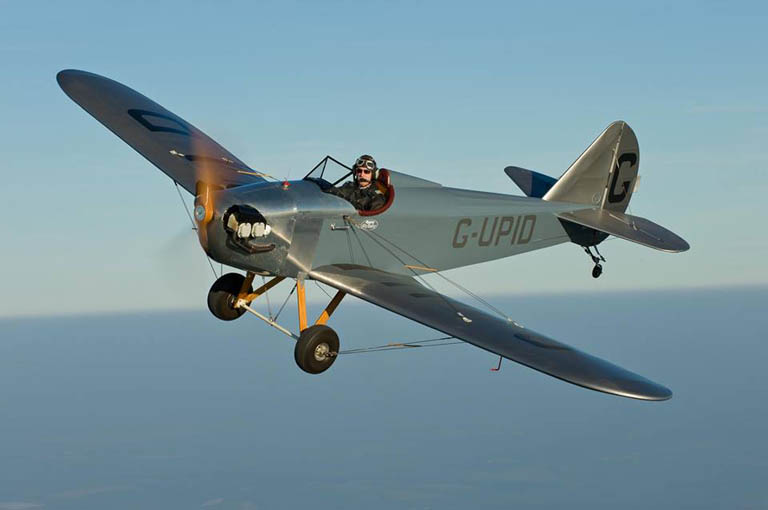
- Errata on what changes to the diagrams are needed.
Over the years, Pete did make some changes to the figures.
- Expanded detail to help you understand the tasks needed to be performed. This will include new diagrams that illustrate aspects of the design to help you imagine how it goes together.
- Key changes needed for safety
- Warnings about components no longer being available, and potential alternatives
- Alternative approaches to some aspects of the design, as suggested by the builder community.
If you own plans...PB100 will make your building job
easier. But Pete intended that the magazine articles
would be all a builder would need.
I'll be modifying the Guides as suggestions are received, depending on the input from the community. I've flown Fly Babies a lot, I've worked on them a lot, but I've never actually built a Fly Baby myself. I'm depending on the community for good info. Each guide will include a version number to help identify when they've been updated.
Accessing the Building Series in EAA SPORT AVIATION
Construction instructions for the Fly Baby are available in
the form of reprints of the original Fly Baby construction
series, running from January 1963 to September 1964.
If you're an EAA member, you can download these articles FOR
FREE from the EAA
Archives. If you're not an EAA Member, it costs
just $40 to join, and you get a great monthly
magazine. In addition, EAA had published the articles
in a SINGLE
BOOK...and that book is now available for free
download as well!
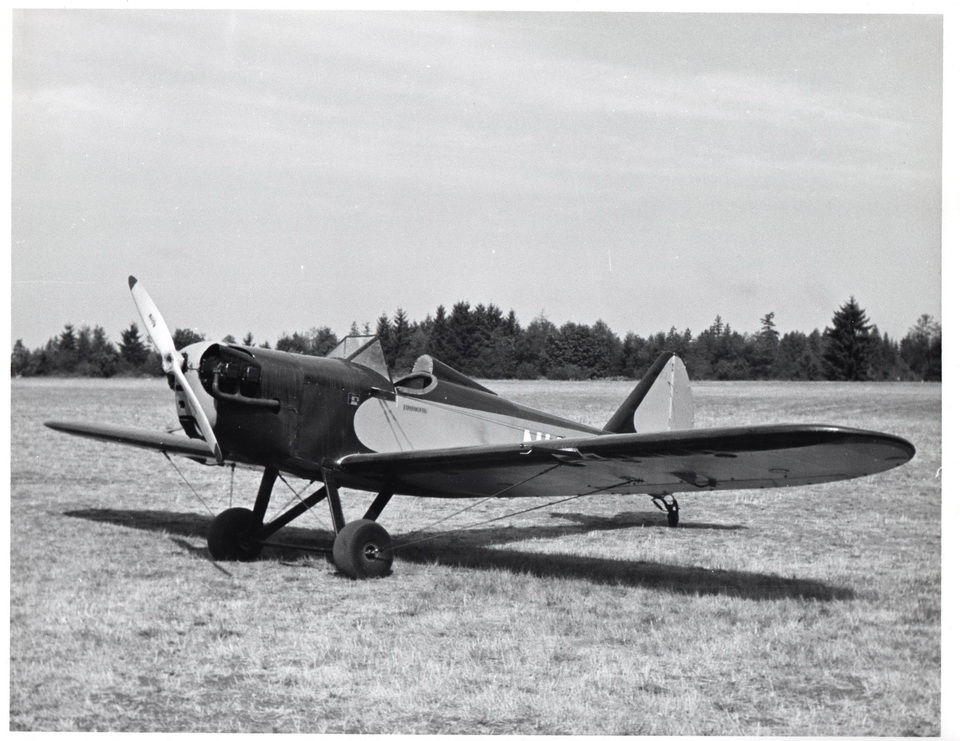
Enter "Building Fly Baby" in the "Exact Phase" box, and turn off all the options except "Title."
Here’s a breakdown of the EAA magazine articles vs. the organization of the plans. Note that the articles were not published in the same sequence as the plans.
|
EAA
Magazine Article Part |
Date of
Publication |
Plans
Topic |
|
1 |
Jan 1963 |
Wing
Construction |
|
2 |
Feb 1963 |
Wing
Assembly |
|
3 |
March 1963 |
Fuselage |
|
4 |
April 1963 |
Fuselage
Secondary Structure |
|
5 |
May 1963 |
Landing
Gear |
|
6 |
June 1963 |
Tail
Surfaces |
|
7 |
July 1963 |
Power
Plant and Related Installations |
|
8 |
Sept 1963 |
Controls |
|
9 |
Nov 1963 |
Misc
Systems 1 |
|
10 |
Dec 1963 |
Misc
Systems 2 |
|
11 |
Jan 1964 |
Corrections |
|
12 |
May 1964 |
Assembly |
|
13 |
Aug 1964 |
Covering
Tail and Wing |
|
14 |
Sept 1964 |
Covering
Fuselage |
There's also an "Overview" in the December 1962
issue. This is mostly history and background.
EAA actually has a nice web page set up about the Fly Baby, and it includes a listing of ALL the Fly Baby articles published...not just the construction series. You don't need to be a member to view it, either.
The EAA Web Site linked just above has added the ability for EAA members to download a PDF of EAA's "Building the Wood Airplane" book. It contains all the Fly Baby construction articles, in one document. You do have to be a member to download the book.

Downloading The Full Plans...for Free!
The Fly Baby community received wonderful news in
February 2022. When he passed away, Pete Bowers
left his entire collection to Seattle's Museum of
Flight.
The Museum has scanned in the plans, and you can read or download them
for free!
This is very, VERY cool. These are 1965
versions of the plans, which means the Companion
Guides will be FULLY APPLICABLE.
Fly Baby fans now have the best of both worlds:
They can read the original articles, download the
COMPLETE plans, and use these Companion Guides for
amplifying information.
Finding Help
All this data is being compiled with the assistance of the
Fly Baby community on Facebook and on the Fly Baby group on
Groups.io.
If you have questions, feel free to ask them there.
As more information comes out, the supporting information
will be upgraded.
Tony Bingelis articles
In addition to the Fly Baby articles, EAA Sport Aviation is
chock-full of great information on building planes like the
Fly Baby. The late Tony Bingelis wrote many of
them. Here's a summary of useful articles in SPORT
AVIATION
- January 1972, Page 14, "Aircraft Metal Work"
- December 1972, Page 36, "To Nail or not To Nail"
- October 1981, Page 39, "Control System Cable Terminals
and Connections"
- September to November 1980, "Making Fittings" parts 1, 2, and 3
- November 1979, Page 14, "You Can't Build an Airplane Without Nuts and Bolts"
- September 1978, Page 34, "Aircraft Plywood...How to Use It"
Also, many of Bingelis' articles were re-published in book form. "Sportplane Construction Techniques" and "The Sportplane Builder" can be purchases from the EAA. For when you're ready to bolt on the powerplant, get "Firewall Forward" and "Tony Bingelis on Engines."
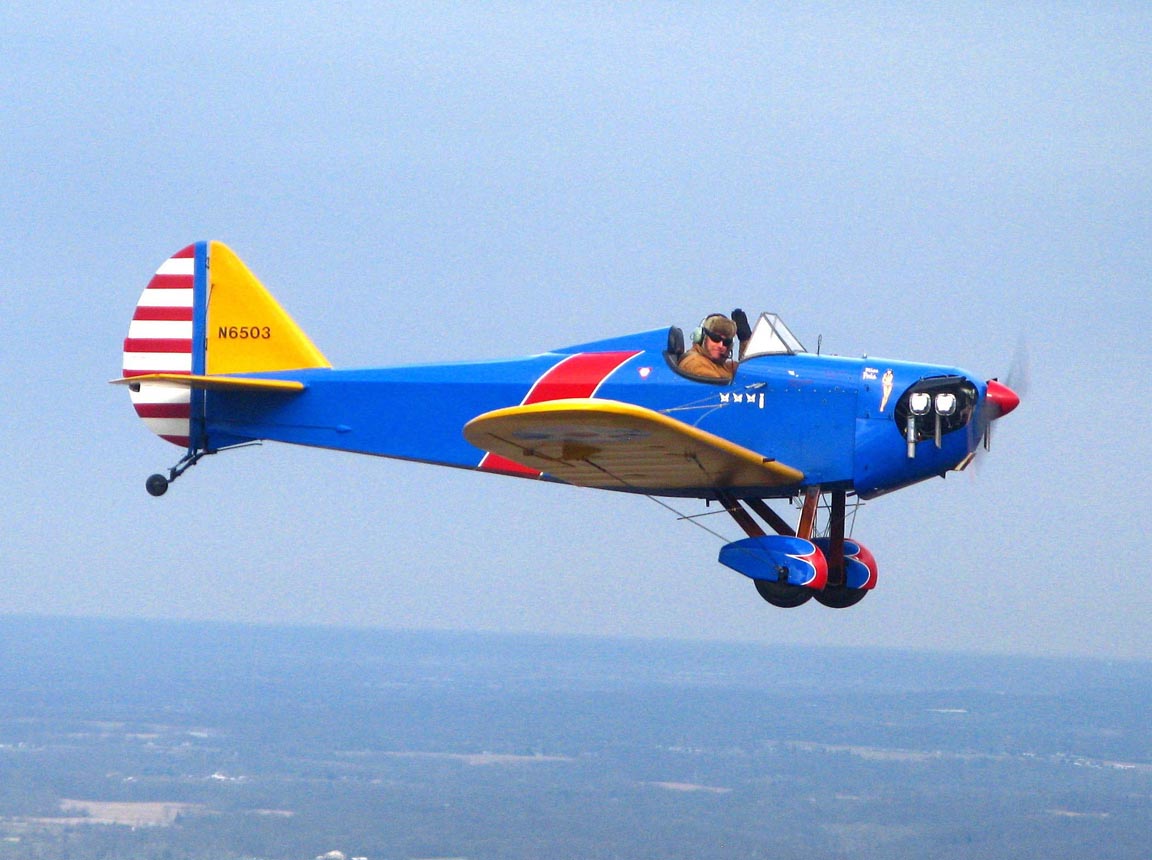
Fly Baby Bulletin
There was a newsletter for Fly Baby builders published in
the 1960s. I have received permission to include it
for free download.
There's a lot of good information scattered throughout.
Templates for Parts
Ted Cannaday put together a PDF file that
contains templates for all the Fly Baby steel parts.
These are the same for both the EAA Articles and the formal
plans.
Jim Katz generated these CAD files (.DWG format) for getting his steel AND wood parts cut by laser/water jet/plasma systems. In an ideal world, you should be able to take these by a commercial vendor and have them cut out quickly at a fairly low cost
FAA Advisory Circular AC43.13-1B
This Advisory Circular
provides the official guidance for aircraft construction and
repair. If covers everything, from wood, to metal, to
hardware, to fabric, to electrical work, and far
beyond. It provides techniques, and it provides
standards. If you follow AC43.13, no FAA inspector or
Designee will object to how your airplane is constructed.
Building Information
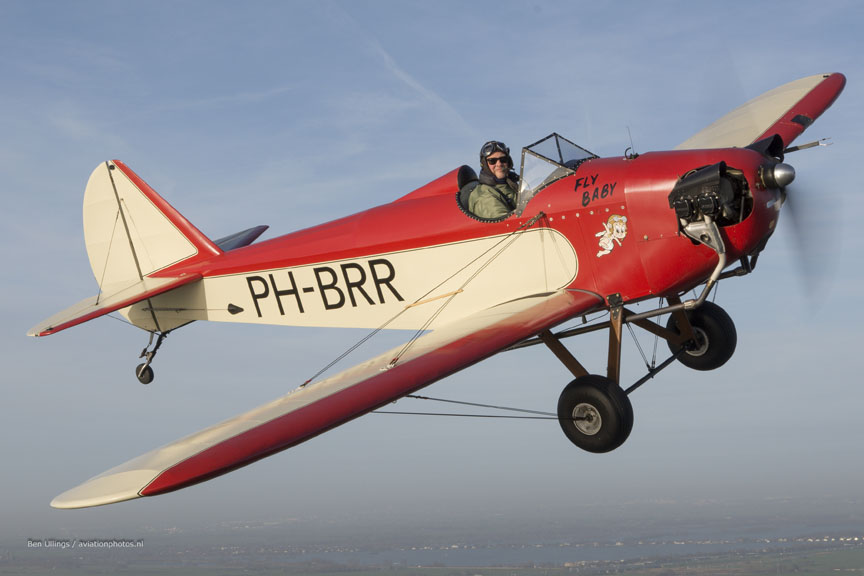
- Introduction
- Preparations (Workshop,
Tools, and finding components)
- The Nuts and Bolts about, well, Nuts and Bolts. And Cable, and Turnbuckles.
- Wood Selection and Testing
- Basic Workmanship
- Materials List (Excel File) (PDF File)
- Aircraft Spruce's Catalog Listing for material kits
- Wood Sources
- Wing Construction -- Article 1,
January 1963.
- Companion Guide
- Rib templates
- Nose Ribs
- Middle Ribs
- Trailing Edge Ribs
- Note that it's VERY IMPORTANT that the templates be
printed out accurately. They each contain a
scale showing a ruler. Print one template out,
and measure with a ruler to ensure it's printed to the
correct scale.
- Steel part templates
- Ted Cannaday's Overall Steel-Part Templates.
- For Article 1, you will need all templates labeled "W402", "W403," "W404", "W405," and "W406"
- Note that the templates show the center point for all holes to be added, not the diameter of the holes. You'll have to cross-reference with the original figures in Article 1.
- Also note that it's VERY IMPORTANT that the templates be printed out accurately. They each contain a scale showing a ruler. Print one template out, and measure with a ruler to ensure it's printed to the correct scale. For my Epson 830 printer, I have to print these out at 94% scale.
- Jim Katz' Autocad Templates
- Jim Katz generated these CAD files (.DWG format) for getting his steel AND wood parts cut by laser/water jet/plasma systems. In an ideal world, you should be able to take these by a commercial vendor and have them cut out quickly at a fairly low cost
- However, it's important to CHECK the dimensions youself... there's no guarantee there aren't any errors in there, nor that the various computer systems haven't distorted some of the dimensions.
- You may want to have the shop actually put in pilot
holes, rather than the full-size holes shown in these
drawings. It gives you a bit more leeway.
- Wing ordinates for the airfoil
- Other Pertinent Information
- Wing Assembly -- Article 2, February
1963.
- Fuselage -- Article 3, March 1963.
- Companion Guide
- Fly Babies for the Big and Tall. How to give yourself a bit more room
- The Wells Brace. It allows the seat to recline slightly, and is easier to install during construction.
- Tail
Post Repair Saga
- Fuselage Secondary Structure -- Article
4, April 1963.
- Companion Guide
- How to Add a Baggage Compartment. The Fly Baby has a moderate size one under the turtledeck, but Matt Michael came up with a way to install a larger one behind the pilot seat.
- Installing an Electrical System. This article about rebuilding an existing system, but it includes complete schematics.
- Installing an electronic tachometer
- Belly inspection panels
- Antenna
installation
- Landing Gear -- Article 5, May 1963.
- Companion Guide
- Maule Tailwheel Inspection and Rebuild
- Installing Grove Wheels and Brakes
- Fly Baby Wheel Selection
- Rotating Fly Baby Tires to Equalize Wear
- Service
Note on the Tailwheel Support Bracket
- Tail Surfaces -- Article 6, June 1963.
- Companion Guide
- Note: Article 7 includes a
short section on installation of the horizontal
stabilizers. This has been incorporated into
Companion Guide 6.
- Power Plant and Related Installations --
Article 7, July 1963.
- Companion Guide
- Engine information
- Harry Fenton on Engines
- General Engine Advice (Carburetors, etc.)
- Survey results on engine/propeller selections
- Installing a Tiny-Tach
- Propeller
Selection
- Electrical Systems
- Controls -- Article 8, September 1963.
- Miscellaneous Systems, Part 1 and 2 --
Articles 9 & 10, November and December
1963.
- Corrections - Article 11, January 1964
- Companion Guide.
In reality, all the corrections Pete included with
Article 10 were incorporated into the previous
Guides. Pete's changed are summarized in this
separate guide for continuity. Note that the
individual Guides include corrections that were made
after the magazine series was complete, including those
discovered by individual builders.
- Operational Information
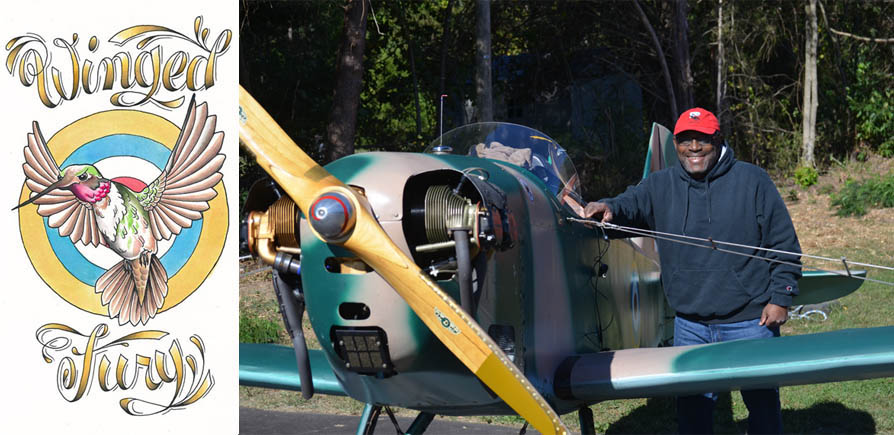
Update Information
1 June 2018
- Added the draft Companion Guide for Article 2. This currently takes the builder through the initial wing assembly.
- Updated the guide for Article 1
26 May 2018:
- Updated the guide for Article 1
- Added the DWG templates
- Completed Companion Guide for Article 2
- Updated Article 1 Companion Guide, and the Preparations material.
22 June
- Updated first two Companion Guides
- Added Draft Guide for Fuselage Construction
25 June
- Article 3 Companion Guide completed and placed online
- Updated Article 3 Companion Guide
- Added Draft version of Article 4 Companion Guide
- Updated Article 3 Companion Guide
23 July
- Replaced draft with Version 1.0 of Article 4 Companion Guide
9 August
- Added the Draft Companion Guide for Article 5
13 August
- Replaced draft with Version 1.0 of Article 5 Companion Guide
12 November
- Added Draft Companion Guide for Article 6
- Replaced draft with Version 1.0 of Article 6 Companion Guide
22 December
- Added Draft Companion Guide for Article 7
- Replaced draft with Version 1.0 of Article 7 Companion Guide
25 February 2019
- Added Draft Companion Guide for Article 8
- Replaced draft with Version 1.0 of Article 8 Companion Guide
30 April
- Added Draft Companion Guide for Article 9
- Replaced draft with Version 1.0 of Article 9 Companion Guide
- Added draft version of the Article 10 Companion Guide
- Replaced draft of Article 10 with Version 1.0
- Added Article 11 Companion Guide.